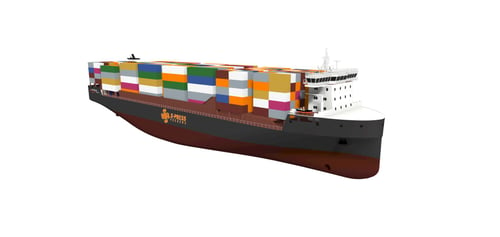
Evolving consumer expectations, stringent regulatory requirements and the need to combat climate change means retailers face pressure to reduce their carbon footprint. Retail giants like H&M and IKEA have set aggressive climate targets – H&M aims to achieve net zero by 2040, while IKEA aspires to be climate positive by 2030. This involves not only reducing their carbon emissions, but also implementing strategies that remove more CO2 from the atmosphere than they emit.
These ambitious goals require a comprehensive approach to sustainability, extending beyond direct operations to also encompass indirect emissions from transportation and logistics, an area where shipping plays a critical role.
A recent study by Oliver Wyman and EuroCommerce has shown that Scope 1 and 2 emissions – those directly from a company’s own operations and the energy it purchases – account for just 2% of the European retail and wholesale sector’s total emissions. In contrast, Scope 3 emissions, which include all other indirect emissions across the entire supply chain, such as the transportation of goods and emissions from suppliers, account for a staggering 98%. This underscores the importance of addressing broader supply chain emissions, particularly those involving transportation of goods.
Consumers increasingly favour brands with strong environmental credentials. Companies that prioritise sustainable practices in their logistics can enhance their reputation and customer loyalty. A 2024 PwC report says 80% of consumers are willing to pay more for sustainability, even as cost of living pressures weigh in.
Companies cannot afford to overlook the impact that sustainability has on their brand’s perception and long-term success.
The evolving role of shipping in achieving sustainability goals
For retailers aiming to reduce Scope 3 emissions, sustainable shipping services are an avenue worth exploring. One key aspect – sometimes overlooked – is the role of maritime feeder services, which use smaller vessels to transport the goods from the main transshipment port to the smaller ports.
Feeder services play a crucial role in maintaining efficient and timely supply chains, particularly as the shipping industry increasingly turns to sustainable practices. Today, there is a sufficient quantity of alternative marine fuels made from biomass feedstock, including green methanol, for maritime transportation to adopt.
The adoption of green methanol as sustainable fuel offers significant potential to reduce greenhouse gas emissions by up to 65% compared to conventional fuels. Recently, X-Press Feeders launched a scheduled feeder network powered by green methanol in Finland and the Baltics, a region chosen for its strong commitment to sustainable shipping. This initiative marks a significant step towards the broader adoption of green alternative fuels, underscoring the vital role of feeder services in advancing environmental goals within retail logistics and the global maritime industry.
Moreover, the integration of digital technologies, such as data analytics for tracking carbon emissions across supply chains and AI-driven logistics optimisation, is enabling more transparent and efficient shipping practices. These technologies provide greater accuracy in reporting emissions and help companies demonstrate their commitment to achieving sustainability goals.
The relationship between retailers and shipping will become even more critical as both industries adapt to new technologies, regulatory changes, and consumer demands.
The future of sustainable shipping in retail
The maritime shipping sector – and particularly feeder services – is playing an increasingly vital role in helping retailers achieve their sustainability targets. By embracing innovative practices and focusing on sustainable logistics solutions, the industry is well-positioned to assist retailers in aligning their operations with broader environmental objectives.
This shift towards sustainability enables retailers to make significant progress toward their net-zero targets, enhance their brand reputation, and meet the rising expectations of consumers.





